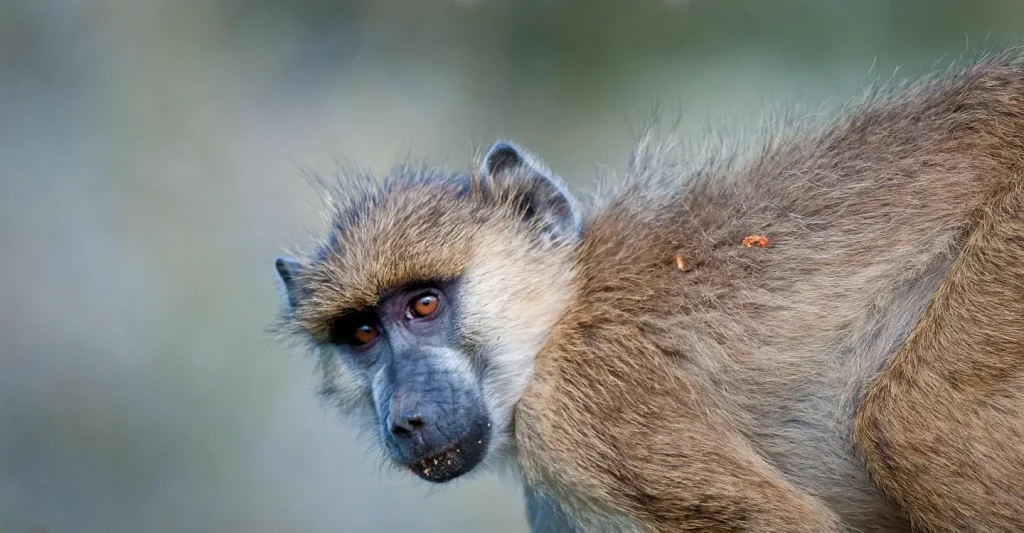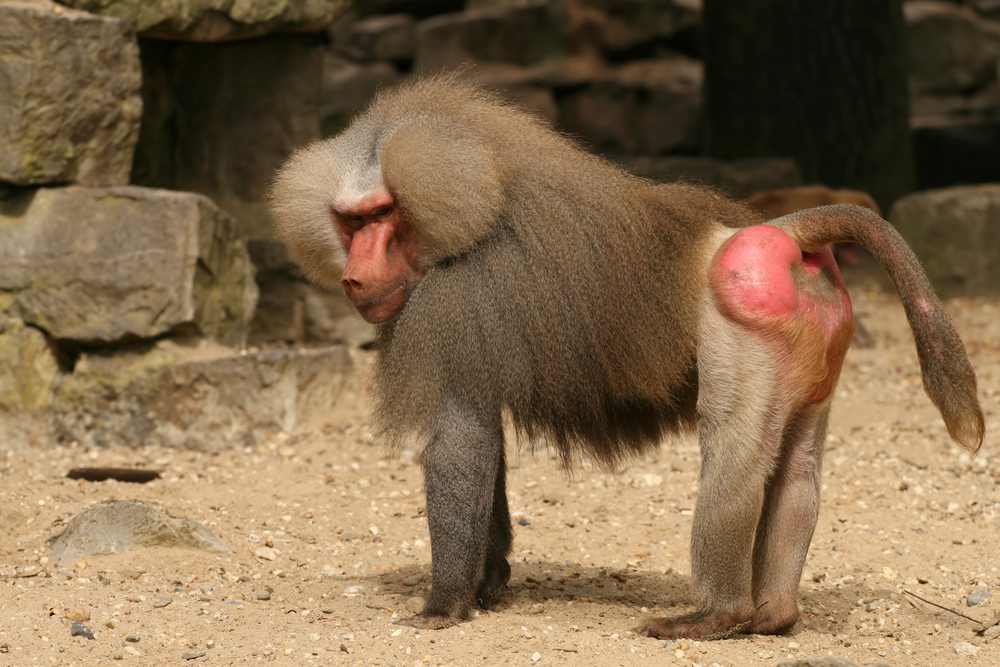Baboon: Facts, Species, Behaviors, Weight, and Lifespan
Baboon: Facts, Species, Behaviors, Weight and Lifespan: What are baboons? – They are some of the world’s largest monkeys. There are five species of the baboon — olive, yellow, chacma, Guinea, and sacred — scattered across various habitats in Africa and Arabia.

Baboon Facts
Of all the baboon species, the olive baboon has the widest distribution. Although the baboon, like other Old World monkeys, lacks a prehensile (gripping) tail, which means that it is not utilized as a hand, it is nevertheless capable of climbing when required. They all have thick fur, canine-like teeth, strong jaws, and canine-like nostrils. The ruff, or longer mane around the neck, is unique to males.
Facts About Baboons
AMAZING FACTS ABOUT BABOONS
SCIENTIFIC NAME: OLIVE BABOON (PAPIO ANUBIS), YELLOW BABOON (PAPIO CYNOCEPHALUS), SACRED BABOON (PAPIO HAMADRYAS), CHACMA BABOON (PAPIO URSINUS), GUINEA BABOON (PAPIO PAPIO)
LIFE SPAN: 20 TO 40 YEARS
GESTATION: ABOUT 6 MONTHS
WEIGHT: 9 TO 31 KILOGRAMS (20 TO 70 POUNDS)
HABITAT: SAVANNAS AND WOODLANDS
PREDATORS: HUMANS, LEOPARDS, AND CHEETAHS
SIZE: 50 TO 76 CENTIMETERS AT THE SHOULDER (20 TO 30 INCHES)
DIET: OMNIVOROUS
Challenges Faced by Baboons
- The baboon’s major predators are humans: Because they are frequently seen as a pest species, baboons are frequently poisoned and murdered on purpose. The sacred baboon is more frequently targeted for this type of hunting. Baboons are now being used more frequently in medical research and lab settings.
- Baboons are losing their homes: This species is in danger because of habitat loss brought on by overgrazing, agricultural development, irrigation projects, and general human population growth.

Baboon
Behaviors of Baboons
- They like to hang out in groups: They congregate in groups of, on average, 50 people to sleep, travel, eat, and socialize. The yellow baboon normally forages in long, evenly spaced armies, some of which have reached 300 members. Typically, these groups have seven or eight males, as well as roughly twice as many females and their offspring. The foundation of the troop is the female and juvenile family unit. Males move into and out of different troops as they mature and leave their natal forces.
Diet: What do Baboons eat?
- The baboon is an opportunistic eater: These primates are omnivorous and will consume nearly any edible object. In addition to berries, seeds, pods, blooms, leaves, roots, bark, and sap from numerous plants, grass makes up a sizable portion of their diet. In addition, they consume insects and tiny amounts of meat from vervet monkeys, small antelopes, fish, shellfish, hares, and birds. Chacma baboons have been reported to survive without water for up to 11 days or more. They often inhabit more arid and desert environments. They all have the advantage of living in savannas that aren’t frequented by other monkeys because they can only survive on grass.
Habitats: Where do baboons live?
They are remarkably versatile and can be found in a wide variety of settings. Although some of these monkeys reside in tropical forests and mountains, they favor semi-arid environments like savannas and bushlands. Ample water supplies and secure sleeping areas, whether in lofty trees or on cliff cliffs, appear to be the two main requirements for any environment.


